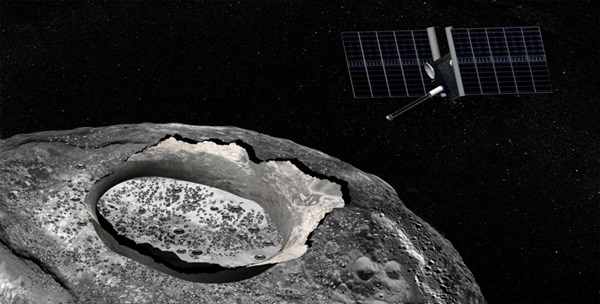Key Takeaways:
New research suggests that the asteroid 16 Psyche may have traces of water splattered across its surface. Infrared observations reveal the characteristic absorption of unexpected volatiles, hinting at impacts by water-bearing rocks crashing into the iron-rich asteroid that is suspected to be the relic core of a failed planet.
16 Psyche is quickly becoming an asteroid worth remembering. Unusual for its nearly-pure iron and nickel composition, researchers theorize it may the shattered core of a protoplanet destroyed in the heavy bombardment of the early Solar System. That alone makes the asteroid a tempting target for a proposed NASA mission. That a collaboration led by Driss Takir of the US Geological Survey discovered surface traces of volatiles makes it even more intriguing.
Metallic asteroids are the densest asteroids, packed with metals like nickel and iron. 16 Psyche is the essence of a metallic asteroid: dense, radar bright, and the most iron-rich asteroid in the Solar System. If it has hydrated minerals, it isn’t because it formed with them.
16 Psyche likely originated when brutal collisions stripped an embryonic planet of its outer layers. To explain how the asteroid’s surface could be splotched with water or its reactive kin hydroxyl, researchers are suggesting it was impacted by a carbonaceous asteroid rich in silicate rocks, hydrated minerals like clay, and other volatiles.
Questions about the asteroid’s surface may not need to wait long. The asteroid is the target for one of five potential NASA missions. Led by Lindy Elkins-Tanton of Arizona State University, the proposal targets a launch as early as 2020. The $500 million budget Discovery-class missions are part of NASA’s lower-budget space exploration programs including the Kepler Space Telescope used to find exoplanets, the MESSENGER mission to Mercury, and the Dawn spacecraft that surveyed both Vesta and Ceres.










